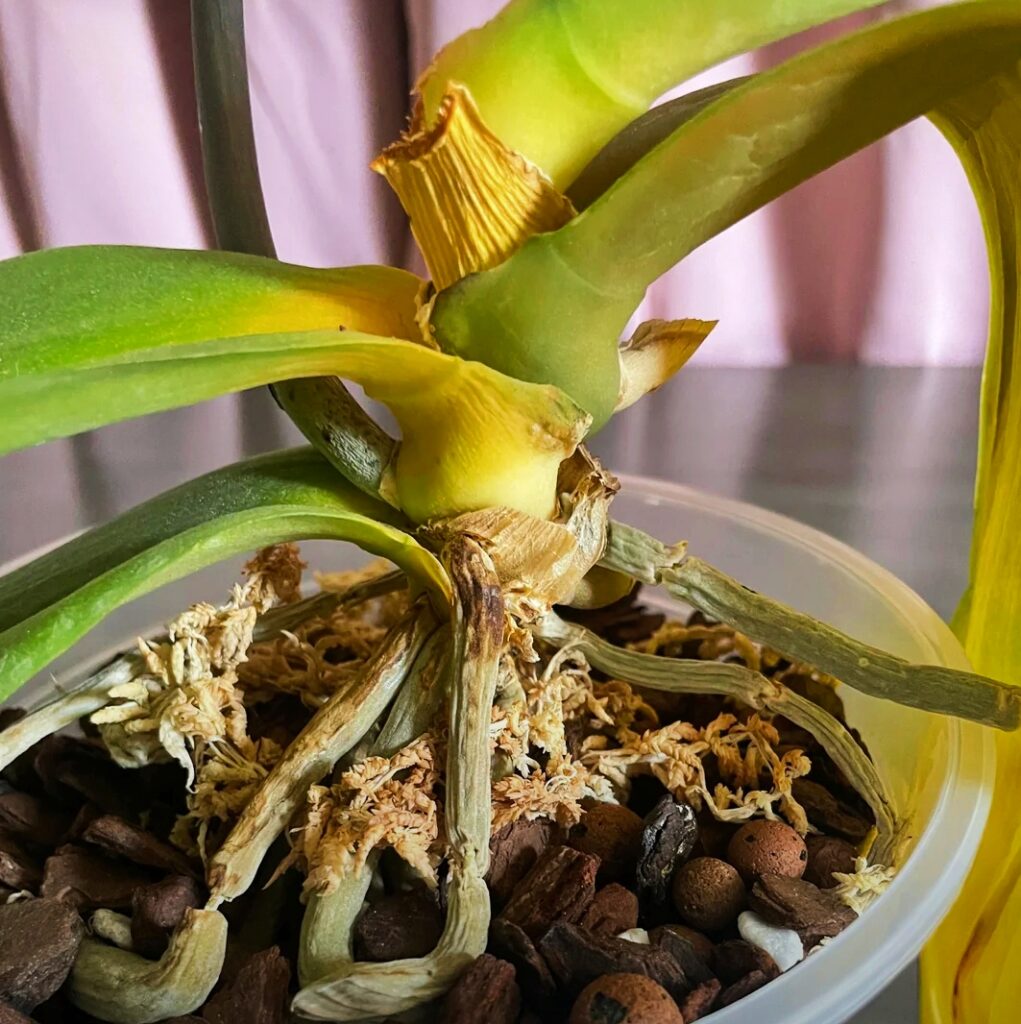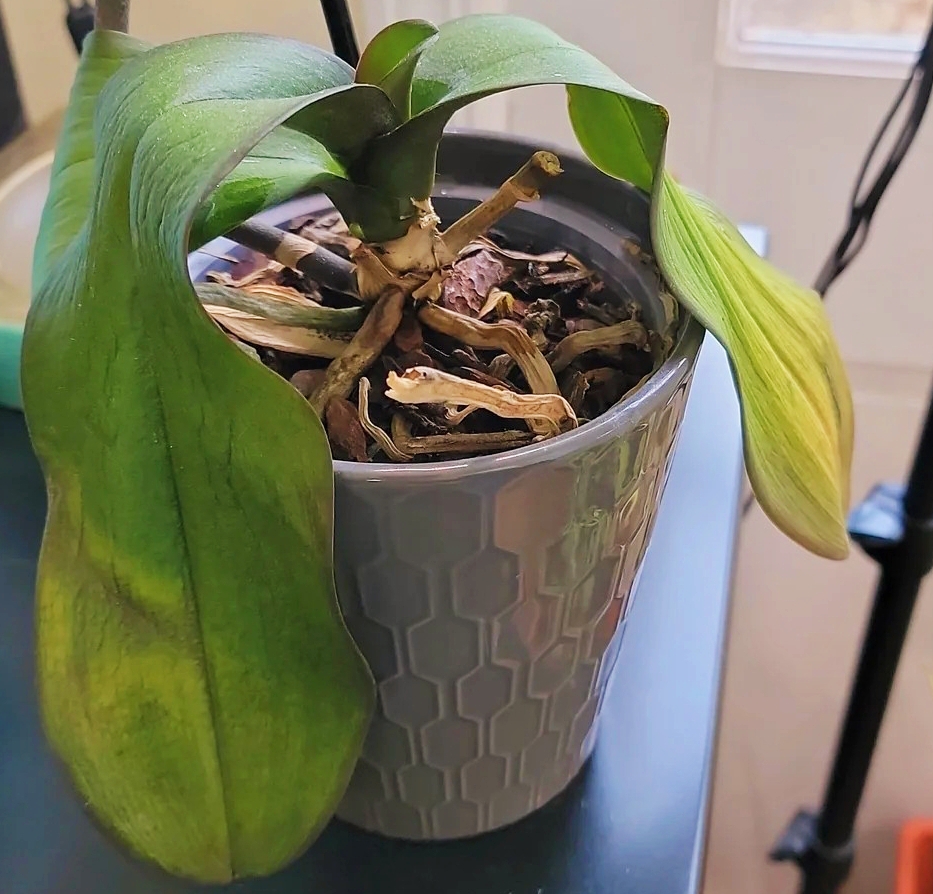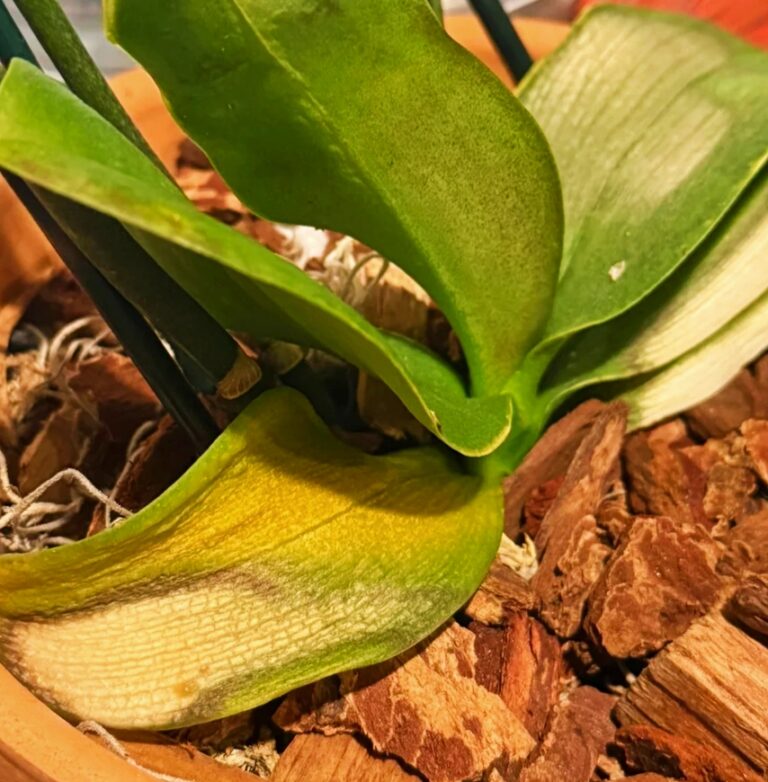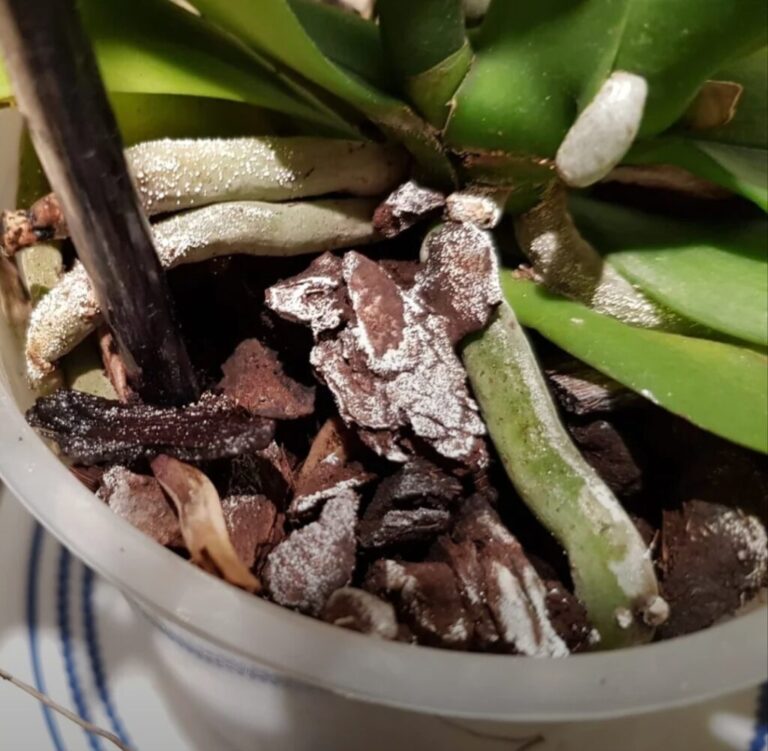Orchids are stunning plants, but they can be tricky to care for—especially for beginners. It’s frustrating when your orchid starts losing leaves, its flowers drop, or worse, its roots rot away. But don’t give up just yet! With the right approach, even a struggling orchid can bounce back to life.
The good news is that orchids are surprisingly resilient, and in most cases, they can recover if you identify the problem early and take the right steps. Whether your orchid is suffering from overwatering, dehydration, or poor light conditions, making small adjustments to its environment can make a huge difference. The key is to understand what your plant needs and provide the right balance of care.
In this guide, we’ll walk you through 9 practical, step-by-step tips to help you revive your orchid and keep it thriving. If you follow these tips carefully, your orchid will have a strong chance of making a full recove
- 1 Dying Orchid Tips
- 2 Understand Your Orchid’s Needs
- 3 Because of their unique growth habits, orchids need:
- 4 Assess Root Health
- 5 How to Check Orchid Roots
- 6 How to Save a Rotted Root System
- 7 Adjust Your Watering Routine
- 8 Best Watering Practices:
- 9 Maintain Proper Humidity
- 10 Ways to Increase Humidity:
- 11 Provide Adequate Light
- 12 Ideal Light Conditions:
- 13 Keep Temperatures Stable
- 14 Fertilize Wisely to Boost Growth
- 15 Best Orchid Fertilizer Practices:
- 16 Common Mistakes to Avoid:
- 17 Prune Dead Blooms and Leaves to Encourage New Growth
- 18 How to Prune an Orchid:
- 19 Repot Your Orchid When Necessary
- 20 How to Repot an Orchid Properly:
- 21 Common Orchid Problems and Their Solutions
- 22 Orchid Care Throughout the Year (Seasonal Guide)
Dying Orchid Tips

Understand Your Orchid’s Needs
Before jumping into the rescue process, it’s essential to understand how orchids grow. Unlike typical houseplants, orchids are epiphytes, meaning they grow on trees in their natural habitat rather than in soil. Instead of absorbing water and nutrients from the ground, orchids take in moisture and nutrients from the air through their aerial roots. This makes them quite different from traditional potted plants, and they require special care to thrive indoors.
Because of their unique growth habits, orchids need:
Well-draining potting media (not regular soil, but orchid-specific bark or sphagnum moss)
Bright, indirect light (direct sun can burn their leaves)
Proper humidity levels (ideally between 50-70%)
Good airflow around the roots to prevent rot and fungal infections
The most common orchids grown indoors are Phalaenopsis orchids (moth orchids), but other varieties like Cattleya, Dendrobium, and Oncidium have slightly different care requirements. However, the principles in this guide apply to most orchids, especially when it comes to reviving a struggling plant.
Assess Root Health
The roots are the lifeline of an orchid, and if they’re damaged, the plant will suffer. When an orchid’s roots begin to decay, the plant can no longer absorb water properly, leading to leaf yellowing, flower loss, and stunted growth. Checking the roots is the first step in diagnosing the problem and deciding what action to take.
How to Check Orchid Roots
Carefully remove the orchid from its pot. To prevent harming any healthy roots, exercise gentleness.
Inspect the roots closely.
Healthy roots: Firm, plump, white, or green.
Unhealthy roots: Mushy, black, brown, or shriveled.
If you notice a large number of black or mushy roots, your orchid may be suffering from root rot caused by overwatering or poor drainage. On the other hand, if the roots are shriveled and dry, the plant might not be receiving enough moisture.
How to Save a Rotted Root System
Trim off any dead or mushy roots using sterilized scissors. Removing rotting roots prevents the spread of fungal infections.
Rinse the roots gently with lukewarm water to remove any remaining potting mix.
Apply hydrogen peroxide (3%) to the remaining healthy roots to kill bacteria and fungi.
Repot the orchid in fresh orchid mix, making sure the pot has proper drainage.
If most of the roots are dead, don’t panic—many orchids can regrow new roots if they are kept in a humid environment and given proper care.
Tip: Use a root-growing fertilizer to encourage strong and healthy root
Adjust Your Watering Routine
Overwatering is the leading cause of orchid death. Many beginners assume that orchids need frequent watering, but these plants actually thrive on a wet-dry cycle, meaning they must dry out between waterings to prevent root rot.
Best Watering Practices:
Water once a week (or when the top inch of the potting mix is dry).
Use room-temperature, distilled water to avoid harmful minerals found in tap water.
Always water in the morning so excess moisture evaporates before night, reducing the risk of fungal infections.
If you suspect your orchid has been overwatered, cut back on watering and allow the roots to dry out before giving it more moisture. If your orchid has no roots, try using a “humid chamber” method—placing it in a covered container with damp moss to encourage new root growth.
Maintain Proper Humidity
Orchids originate from tropical regions, so they need 50-70% humidity to thrive. Dry indoor air, especially during winter months, can cause wrinkled leaves, slow growth, and bud drop. Keeping the right humidity level is crucial for reviving a struggling orchid.
Ways to Increase Humidity:
✅ Use a humidity tray: Place pebbles in a shallow tray, fill it with water, and set the orchid pot on top (without touching the water).
✅ Run a room humidifier: This helps maintain consistent moisture in the air, especially in dry climates.
✅ Group plants together: Houseplants naturally increase humidity when placed close together, creating a more orchid-friendly environment.
If your orchid is suffering from dry air, you’ll notice wrinkled, leathery leaves and stalled growth. Increasing humidity can help restore the plant’s health over time.
Provide Adequate Light
Light is one of the most important factors in orchid care. Too much light causes leaf burn, while too little prevents blooming and weakens the plant. Orchids need bright, indirect light to thrive, which mimics the dappled sunlight they receive in their natural habitat.
Ideal Light Conditions:
Place your orchid near an east- or west-facing window for bright, indirect light.
Use sheer curtains to diffuse harsh sunlight.
Think about adding a grow light if natural light isn’t enough. How to Determine If Your Orchid Is Receiving Sufficient Light .
Healthy light exposure: Leaves are a vibrant green.
Too much light: Leaves turn yellow or develop sunburn spots.
Too little light: Leaves are dark green but fail to produce flowers.
If your orchid isn’t blooming, lack of light is usually the culprit.
Keep Temperatures Stable
Orchids are sensitive to sudden temperature changes. If your orchid’s buds are dropping before blooming, temperature fluctuations might be the culprit.
Ideal Temperature Ranges:
Daytime: 65-75°F (18-24°C)
Nighttime: 55-65°F (13-18°C)
Avoid placing orchids near heating vents, air conditioners, or drafty windows, as these can cause stress and bud loss.
Fertilize Wisely to Boost Growth
Orchids don’t require as much fertilizer as other houseplants, but they still need essential nutrients to grow strong roots, healthy leaves, and vibrant flowers. The right fertilizer, used sparingly, can help revive a struggling orchid by providing the necessary nutrients it may be lacking.
Best Orchid Fertilizer Practices:
✅ Use a balanced fertilizer (such as 20-20-20) that contains nitrogen, phosphorus, and potassium. This supports overall plant health, encouraging leaf growth, root development, and flower production.
✅ Dilute to half strength before applying, as orchids have sensitive roots that can be burned by strong fertilizers.
✅ Feed your orchid every two weeks during its growing season (spring and summer) and reduce to once a month in fall and winter.
Common Mistakes to Avoid:
❌ Over-fertilizing can cause salt buildup in the potting mix, leading to burned roots. If you notice leaf tip browning, flush the pot with clean water to remove excess fertilizer.
❌ Fertilizing a sick or rootless orchid can do more harm than good. If your orchid is struggling with root rot or has lost its roots, focus on root recovery before adding fertilizer.
A well-fed orchid will develop strong roots, deep green leaves, and a higher chance of reblooming. If your orchid hasn’t flowered in a long time, a weak fertilizer applied consistently can help trigger blooming.
Prune Dead Blooms and Leaves to Encourage New Growth
When an orchid is struggling, pruning away dead or dying parts helps redirect the plant’s energy toward recovery. Spent blooms, yellowing leaves, and dead roots drain the orchid’s resources and should be removed to promote fresh growth.
How to Prune an Orchid:
Use sterilized scissors or pruning shears to avoid spreading bacteria.
Cut flower spikes about an inch above a node (bump on the stem) to encourage reblooming. If the entire spike is brown and dried out, remove it completely.
Remove any yellow, mushy, or dead leaves to prevent disease from spreading.
If the orchid has dried, shriveled roots, trim them off and repot with fresh orchid mix.
Pruning isn’t just about aesthetics—it’s a vital step in helping a stressed orchid recover. Once the plant has been trimmed and placed in optimal conditions, it will focus its energy on growing new roots and leaves.
Repot Your Orchid When Necessary
Orchids need repotting every 1-2 years to refresh their potting mix and ensure healthy root growth. Over time, the bark in the potting mix breaks down, retaining too much moisture and increasing the risk of root rot. If your orchid’s roots look unhealthy, or the mix appears soggy and decomposed, it’s time for a fresh start.
How to Repot an Orchid Properly:
✅ Choose a pot that has drainage holes. Orchids hate sitting in water, so a well-ventilated pot prevents excess moisture buildup.
✅ Use a fresh orchid mix. A good mix contains bark, perlite, and sphagnum moss, providing aeration and proper drainage.
✅ Gently loosen the roots before placing the orchid in the new pot. Spread the roots out to avoid compacting them.
✅ Water lightly after repotting, then wait a few days before resuming regular watering. This allows the plant to adjust and prevents shock.
Repotting can be stressful for orchids, so it’s best done when the plant is not in bloom. If you suspect your orchid’s poor health is due to an old or broken-down mix, repotting can work wonders in reviving it.
Common Orchid Problems and Their Solutions
Even with the best care, orchids can sometimes show signs of stress. Identifying the problem early can prevent further damage and help you take corrective action before it’s too late.
| Issue | Cause | Solution |
|---|---|---|
| Yellow Leaves | Overwatering or too much direct sunlight | Adjust watering schedule, move to indirect light |
| Dropping Buds | Sudden temperature changes or low humidity | Keep temperature stable, increase humidity |
| Root Rot | Overwatering or poor drainage | Trim affected roots, repot in fresh mix |
| Wrinkled Leaves | Dehydration or low humidity | Water properly, maintain 50-70% humidity |
| No Flowers | Insufficient light or lack of nutrients | Move to brighter spot, fertilize weakly |
Keeping an eye on these issues and making adjustments will ensure your orchid stays healthy and continues to thrive.
Orchid Care Throughout the Year (Seasonal Guide)
Orchids go through different growth stages throughout the year, and their care needs change slightly with each season. Here’s a quick care guide to help you adjust your routine:
| Month | Activity |
|---|---|
| January | Reduce watering, avoid fertilizing too much |
| February | Check humidity, adjust if necessary |
| March | Start fertilizing regularly as new growth appears |
| April | Repot if necessary, especially for root-bound orchids |
| May | Increase watering, watch for pests as temperatures rise |
| June | Maintain consistent watering and fertilizing |
| July | Protect orchids from excessive heat and light |
| August | Keep humidity levels up in dry climates |
| September | Prepare for blooming season, continue regular care |
| October | Maintain fertilizing and watering routine |
| November | Reduce watering slightly as temperatures drop |
| December | Provide minimal care, monitor plant health |
By adjusting your care routine seasonally, you can keep your orchid in peak condition year-round.
If your orchid is struggling, don’t give up! With proper care, many orchids will bounce back and reward you with beautiful blooms. Just remember:
✔️ Check the roots and trim off any rot
✔️ Adjust your watering schedule to prevent overwatering or dehydration
✔️ Increase humidity if needed to prevent wrinkled leaves
✔️ Provide bright, indirect light to encourage healthy growth
✔️ Fertilize sparingly but consistently to support blooming
✔️ Repot every 1-2 years to refresh the potting mix and promote root health
Even if your orchid looks like it’s on its last legs, don’t give up too soon. These resilient plants often surprise us with their ability to bounce back when given the right care. Stay patient, stay consistent, and soon enough, your orchid will thrive again!
Reviving a dying orchid takes patience and attention to detail, but with these 9 practical tips, you can bring your orchid back to life! The key is to adjust your care routine to match your orchid’s needs. If you can provide the right balance of watering, light, humidity, and temperature, your orchid will not only recover but will reward you with beautiful blooms for years to come.
fAQS
Why is my orchid dying?
A dying orchid may be suffering from overwatering, root rot, lack of humidity, or improper lighting. Check the roots and leaves to determine the cause and adjust your care routine accordingly
Can I save a dying orchid with no roots?
Yes, you can revive a dying orchid with no roots by placing it in a humidity-controlled environment, using sphagnum moss or water culture to encourage new root growth
How do I revive a dying orchid with yellow leaves?
A dying orchid with yellow leaves could be overwatered or exposed to too much direct sunlight. Reduce watering, provide indirect light, and ensure proper airflow to prevent further damage.
What should I do if my orchid’s leaves are wrinkled and limp?
Wrinkled, limp leaves are a sign of dehydration or root rot in a dying orchid. Check the roots—if they’re mushy, trim the dead parts and repot the plant in fresh orchid mix.
How do I prevent my orchid from dying after repotting?
To prevent a dying orchid after repotting, use a well-draining orchid mix, avoid disturbing healthy roots too much, and water sparingly until the plant adapts to its new pot.
Is my orchid dying if the flowers are falling off?
No, an orchid shedding flowers is normal after blooming. However, if the plant looks weak, it might be a sign of a dying orchid due to improper care or stress.
How often should I water a dying orchid?
A dying orchid should be watered carefully based on its condition. If roots are dry and silver, water once a week. If they are mushy, stop watering and let the plant recover.
Can too much sunlight cause a dying orchid?
Yes, excessive sunlight can cause sunburn and dehydration, leading to a dying orchid. Keep your orchid in bright, indirect light to prevent leaf damage.
Should I cut the flower spike of a dying orchid?
If your dying orchid has a dry or brown flower spike, cut it off to help the plant conserve energy and focus on growing healthy roots and leaves.
How do I revive a dying orchid with root rot?
To save a dying orchid with root rot, trim the rotten roots, apply fungicide, and repot in fresh orchid bark. Water only when the potting medium is dry to prevent further rot.
Can fertilizing help a dying orchid recover?
Yes, a weak or dying orchid can benefit from diluted orchid fertilizer. Use a balanced fertilizer once a month to promote healthy growth and recovery.
Why is my orchid dying even with proper care?
If your dying orchid is receiving proper care but still struggling, it may have a pest infestation, bacterial infection, or be too stressed from recent environmental changes.
What’s the best temperature to prevent a dying orchid?
A dying orchid can be affected by extreme temperatures. Keep your orchid in a range of 65-75°F (18-24°C) for optimal health.
Can a dying orchid recover if all its leaves fall off?
A dying orchid with no leaves can still recover if the roots and crown are healthy. Provide high humidity and proper care to encourage new leaf growth.
How long does it take to revive a dying orchid?
The time it takes to revive a dying orchid depends on the severity of the issue. It may take weeks to months for new growth to appear, so be patient and consistent with care.






